The Anchor Text SEO Tutorial was updated January 2020 to reflect any changes in the Google search engine algorithm: not a great deal has changed regarding anchor text recently, but a lot has changed since I first wrote this tutorial in 2005, so the SEO tutorial has seen a lot of changes.
- What is Anchor Text?
- Anchor Text HTML
- Anchor Text Importance in SEO
- Miserable Failure GoogleBomb
- How Effective is Anchor Text?
- Anchor Text & Backlinks Declining SEO Value
- Anchor Text SEO Tests
- Incorrect Use of Alt Attribute SEO Test
- Alt Attribute SEO Test of Linked Images
- Title Attribute SEO Test of Text Links
What is Anchor Text?
Anchor text is the text part of a text link, screenshot below shows how much anchor text there is just at the top of the home page of this site. Majority of links on a website will have anchor text and anchor text is a Google ranking factor.
Anchor text SEO wise has always been important to Google, many years ago it could be argued the anchor text of incoming links from high PageRank webpages was pretty much off-page SEO in a nutshell.
Today anchor text is important, but as Google now takes at least 200 ranking factors into account it can’t be as important as it once was. Imagine there were say 50 ranking factors in 2005 and today there’s 250, some of the value from the old 50 ranking factors MUST have been diluted into the 200 new ranking factors.
Basically the older Google ranking factors like anchor text, title tags, keywords in URLs, alt text of images etc… can not hold the same importance, BUT that does NOT mean they aren’t important at all.
Anchor Text HTML
Anchor text is the visible text of a hyperlink, for example the text link below links to the home page of this site (https://seo-gold.com/) with the anchor text SEO Gold:
The HTML code for which is-
<a href=”https://seo-gold.com/“>SEO Gold</a>
The red text SEO Gold is the anchor text and the green text https://seo-gold.com/ is the URL for this hyperlink or text link as it is also called.
The code above is the minimum required for a hyperlink/text link.
We can add other code like CSS (change a links colour, make it bold, underline etc…), a few link attributes like the title attribute (title=”phrase here”) as hoverover text (not to be confused with the Title Tag and the rel=”nofollow” attribute so Google ignores the link SEO wise: nofollow not a good SEO idea mind you, deletes link benefit!
Anchor Text Importance in Search Engine Optimization
Google and other search engines weight their Search Engine Results Pages (SERPs) ** towards the anchor text of links to a page.
Basically the text you add as anchor text has direct ranking value to the webpage the link is to and also to the page the link is FROM.
In practice it means the following text link
Anchor Text SEO Test of Internal Links
Passes anchor text SEO ranking benefit to the linked TO webpage (this page: https://seo-gold.com/anchor-text-of-internal-links-seo-test/anchor-text-seo-test-of-internal-links/) giving it a small boost for Google SERPs including these words and related words:
- Anchor
- Text
- SEO
- Test
- of
- Internal
- Links
This webpage (the one you are reading now) also gets a small SEO boost for the above words as well because it’s linking out to a webpage about those words.
The SERPs boost can be demonstrated by looking at extreme examples where a pages high Google ranking can ONLY be attributed to anchor text and no other SEO factors. Googlebombs used to be the easiest examples to find and understand how anchor text effects SERPs, but Google made changes to it’s algorithm to discount Google bombing :-( Still, GoogleBombs they are worth a review.
Miserable Failure GoogleBomb
The miserable failure Googlebomb of late 2003 aimed at the biography page of George W Bush (whitehouse.gov/president/gwbbio.html) clearly showed the SEO power of anchor text.
The US Presidents biography page which fell victim to the Miserable Failure Googlebomb (and a few other Googlebombs) did not include the words Miserable or Failure anywhere within the code, yet years (up to 2008) after the Google bombing it was still at number 1 for the Miserable Failure SERP at Google (see screenshot): in 2014 we can’t find the ex Presidents page in the top 50.
Its consistent search engine placement at number one for this phrase could only be attributed to the anchor text of links to the page: lots of bloggers linking using the anchor text Miserable Failure.
Googlebombs took advantage of the combined effectiveness of anchor text from thousands of links.
A similar phenomenon was occurring with the Computer and Computers SERPs in Google. As of January 2005 a search in Google for the word Computer ranked dell.com as a top 10 result and a search for Computers ranked compaq.com as a top 10 result. Looking at the code of these two webpages reveal neither use the word Computer or Computers respectively: at least not in a format Google understands.
Update: Although the principal that anchor text is very important to Google is still true today (2019) the two domains above now use the keyword computer in their code: maybe they read my SEO Tutorial :-). Interestingly if you looked on page 2 of the results in 2014 the listing for “CA Technologies — Business Rewritten by Software” : ca.com doesn’t use the word computer in the code: valid June 2014.
How Effective is Anchor Text?
Back in 2014 the Computer SERP would be (and still is) considered a highly competitive SERP, it’s a one keyword SERP I wouldn’t target unless it was for a website that has a LOT of aged backlinks: it is a super hard SERP.
In June 2014 there was “About 815,000,000 results” reported in Google for the Computer SERP. Checking page 2 out for the computer SERP at the time at around 15th was a site that is ranked relatively high due to the backlinks using the keyword Computer as anchor text.
Over the years I’ve checked this SERP I’ve seen Dell, Compaq, Gateway and in 2014 CA Technologies listed top twenty (first three companies top 10) for this super hard SERP without using the Computer(s) keyword within the content of the webpage ranked high: nothing on the webpage that would warrant the high rank, the keyword completely missing from the text, title tag, URL filenames for images, alt text….
The computer(s) SERP could only be explained by Google considering anchor text of backlinks as a major SEO ranking factor.
What’s particularly interesting is every time I’ve updated this SEO tutorial (almost a dozen times since 2005) I’ve found a site (4 sites) for this SERP that can only be ranked high due to anchor text: for the record didn’t check in 2018, I think the point has been clearly proven!
The reason these sites have ranked highly for those SERPs was due to the power of anchor text. With hundreds of thousands of pages linking to these home pages with many using the anchor text Computer/Computers it was enough to rank highly with no on page SEO optimization!! Imagine where they could be with a little on site SEO!
Anchor Text and Backlinks Declining SEO Value
Through both experimentation and real sites it is clear anchor text and backlinks in the past was almost always the deciding factor for very hard SERPs. As I update this SEO tutorial in 2019 this is still true, but not as true as it used to be. In 2019 Google uses so many ranking factors it’s rare to find the ONE thing responsible for a great hard SERP and Google has moved from a simple search engine to an answers engine due in part to the Hummingbird updates.
What you should take away from this is if you can get anchor text right it will go a long way to good Google rankings, especially if you also have a decent number of quality backlinks and have some of the other important factors right.
A site can do OK with good on site optimization, but with poor use of anchor text/few links.
A site can do quite well with good use of anchor text/links, but with poor on site optimization.
When you have a highly optimized site (lots of keyword rich content) and good use of anchor text from reasonable PageRank (PR) pages there tends to be very good SERPs, lots of traffic from Google.
Anchor Text SEO Tests
Over the past 15+ years as an SEO consultant I’ve setup thousands of SEO tests. I keep the vast majority of the SEO tests private so they won’t be damaged inadvertently: if I’m testing if the following home page link with a made up keyword ZEZGoodBud will result in this webpage and the homepage ranks for the made up keyword, the last thing I need is others using the made up keyword on other sites or copying the link etc… It adds additional variables I don’t want!
It’s really easy to setup anchor text SEO tests, the home page link above is now an anchor text SEO test. We know Google counts anchor text as a ranking factor for both the linked from and linked to webpages, but what happens when there’s multiple links to the same page?
There are at least FIVE home page links from this webpage, there’s three with anchor text SEO Gold (header area, navigation menu and a link earlier in this article), there’s a footer link with anchor text Freelance SEO Consultant and there’s the test text link above with the made up keyword.
The SEO hypothesis to test is does Google pass anchor text SEO benefit through all links to the same page?
If Google does pass anchor text benefit from ALL links we’d expect to find the home page ranking for the made up keyword. A Google search for the made up keyword BEFORE the SEO test went live shows there are ZERO webpages online using the made up keyword.
It’s a unique word, ideal for an SEO test.
The reason for using a made up keyword is it excludes a lot of variables, imagine trying to do this test with an actual SERP with real competition! We are trying to discover the principle if all multiple links anchor text counts, NOT can I rank a webpage high with one link from a single article!
If Google passes SEO benefit through all links there’s an argument for adding the same link with different anchor text (different keywords) to target more SERPs: if a webpage is important we could add 10 links to it from an article like this and get 10x the SEO benefit! On the other hand if Google only counts one links anchor text there’s no point adding multiple links with different anchor text. We also need to figure out which link Google counts, is it the first link, the last link or a random link???
I have about a dozen private copies of this anchor text SEO test online with various variations and the results are clear.
- Google does NOT count the anchor text of multiple links: doesn’t pass ranking benefit to the linked TO page.
- Google ONLY counts the anchor text of the first link found in the HTML code: since only the first link counts make sure it’s got perfect anchor text.
So from this webpage only the first of the five homepage links counts anchor text wise, the first home page link in the code is the header link at the top with anchor text SEO Gold: that passes ranking benefit to the home page. The four other links appear to be treated by Google as standard body text: Google indexes the text of a text links like the link part doesn’t exist (it’s just text).
Also see my other public anchor text and alt text of linked images SEO tests.
Incorrect Use of Alt Attribute SEO Test
The earlier “Search Engine Results Pages (SERPs)” link (marked with **) includes an alt text SEO test.
View HTML source of this webpage and search Google for what is in the alt=”SERP#Test##”. Search Google for “SERP#Test##”, but replace the 3 #s with 3 zs to confirm the SEO test and you will find “No results containing all your search terms were found.” confirming Google does NOT count alt text added to text links: valid test between June 2014 and October 2018.
Image above is a screenshot of the Google SERP with the code of the incorrectly formatted link. Shows adding an alt=”text here” attribute to a text link is invalid code, which is why Google ignores it for search engine ranking purposes. However, Google does use correctly formatted alt text that’s associated with images as a ranking factor.
Alt Attribute SEO Test of Linked Images
The alt text of linked images is indexed and ranked the same way anchor text is, so alt text (red text below) of a linked image (the image is linked to the URL in green below) is the links anchor text SEO wise.
<a href=”https://seo-gold.com/“><img src=”https://seo-gold.com/images/alt-text-seo-test.jpg” alt=”Alt Text Equivalent to Anchor Text”/></a>
Note updated these SEO tests with new text in October 2018 makes sense to change the text from time to time in SEO tests so sites that scrape content don’t mess with the test results.
Linked Image ALT Text SEO Test
The linked image above is a quick SEO test to determine if Google is still counting the alt text as part of the SERPs, go to Google and search (include the “speech marks” for an exact search) for:
“SEO Gold Alt Text VALID SEARCH TEST 98″
But replace “SEARCH” with “SEO”: I made the substitution so this page only uses the exact phrase including SEO once (as the alt text of the image above). View HTML source of https://seo-gold.com/anchor-text/ and find the alt text for the relevant image.
There’s only one instance of that exact phrase on the website, so if the Google search for the phrase lists two pages from this site (https://seo-gold.com/anchor-text/alt-text-seo-test/ and https://seo-gold.com/anchor-text/) it shows Google passes ranking value through the alt text of a linked image.
The screenshot below shows the Google results at the time of creating the SEO test (before the test existed October 2018). As you can see there were:
No results found for “Test Phrase”.
Linked Image ALT Text SEO Test Results
Below is a screenshot (taken October 2019) of the relevant Google search, you can see the two results from this website.
This could not be a better or clearer SEO test result.
Update May 2020: The above alt text SEO test is still valid, still gives the exact same result, so Google hasn’t changed it’s algorithm regarding pass ranking value through the alt text of linked images for at least 15 years.
This webpage is indexed (it’s the 2nd result in Google) showing the alt text is indexed and ranked like normal body text. The text we searched for is ONLY located within the alt=”test search phrase here”, there’s no other webpage in this site using that exact phrase, it’s ONLY found in the alt text of the one linked image above.
If Google didn’t treat alt text on a webpage in a similar way to how it treats body text, why would this webpage be ranked for the test search phrase? It proves Google indexes and ranks alt text of linked images.
The other webpage ranked for the test phrase is https://seo-gold.com/anchor-text/alt-text-seo-test/, which is what the linked image links to. Again this is a clear SEO test result, the text we searched for is NOT located on the above webpage, the only reference the page has to the text is via the image link using the alt=”test search phrase here” showing the alt text is being treated the same way as anchor text in terms of passing ranking benefit.
Basically by linking to a webpage via an image link with alt text, the webpage being linked from and to are being ranked for whatever phrase is within the alt text attribute in the same way anchor text works.
Title Attribute SEO Test of Text Links
As covered above the anchor text of links is very important to Google search engine rankings, over the years as their algorithm has developed it’s importance has shifted, but it is still very importance for SEO 2020 and beyond.
One of the great things about anchor text and links in general is it’s quite easy to setup quick SEO tests that informs us how Google counts anchor text, alt text, title attributes etc…
Next we test if Google counts text within the title attribute added to text links.
Anchor TextThe code above shows how to add a title attribute to a text link, in 2020 Google does NOT give the content of the title attribute any SEO value, it’s ‘invisible’ to Google.
Google Hummingbird and Anchor Text
The link above goes to another webpage on this site and includes a title attribute with a made up unique keyword. Hoverover the link and you should see the made up keyword: it ends in seo: I’ll periodically change the made up keyword so no one can destroy this SEO test.
When I searched for this keyword (bz.tg.rtz.seo: remove the 3 dots) in Google in January 2020, there were no results on the Internet. It’s been this way for this public SEO test for over 5 years, I have similar SEO tests with the same result.
I can’t use this made up keyword within this article (hence the .s version) as it will damage the SEO test, it has to be ONLY within the title attribute above. Feel free to View Source of the link and search Google for it.
If any webpages from this website shows up Google has changed the way it treats the title attribute of text links or the SEO test has been broken.
If Google counted the title attribute towards search engine rankings you’d expect to see one or more of these conditions:
- This page ranking in Google for the made up keyword.
- The page the above link goes to ranking for the made up keyword.
As you can see above it’s not hard to setup SEO tests, basically isolate one SEO variable and test it. The benefit of having a science background, I studied for a Bsc degree in genetics over 20 years ago and planned to go into scientific research (had to give up my first career for medical reasons).
David Law

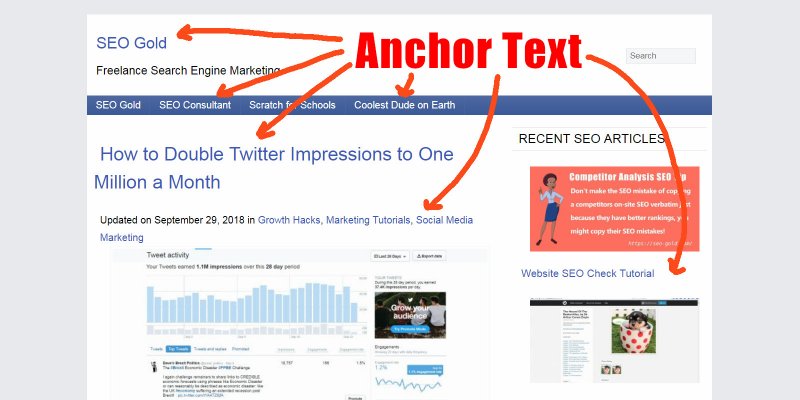

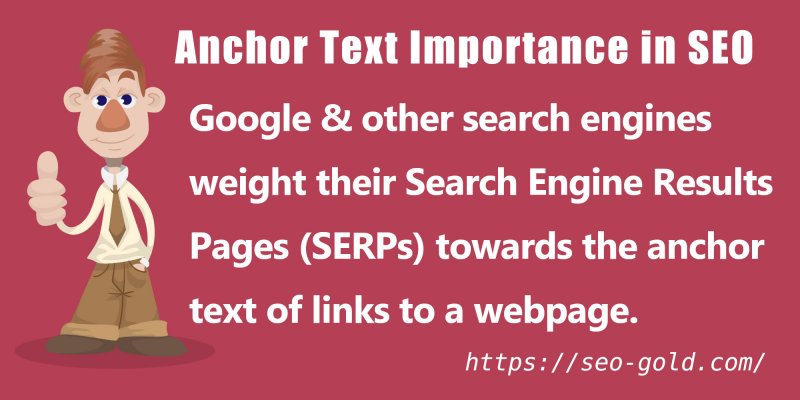
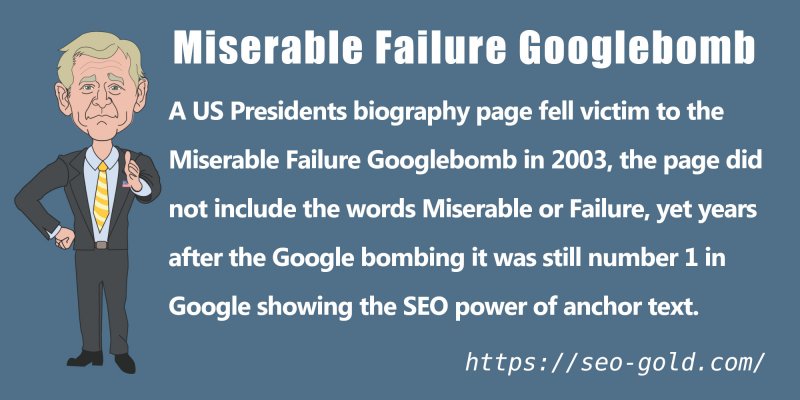
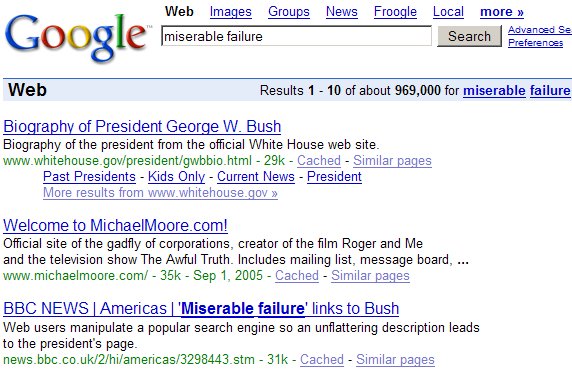

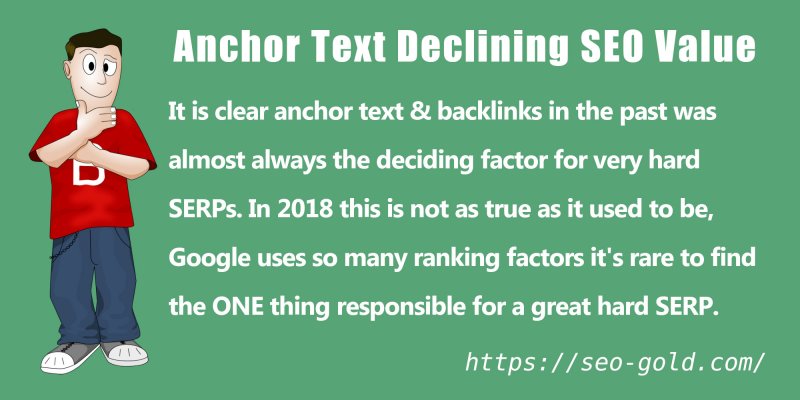
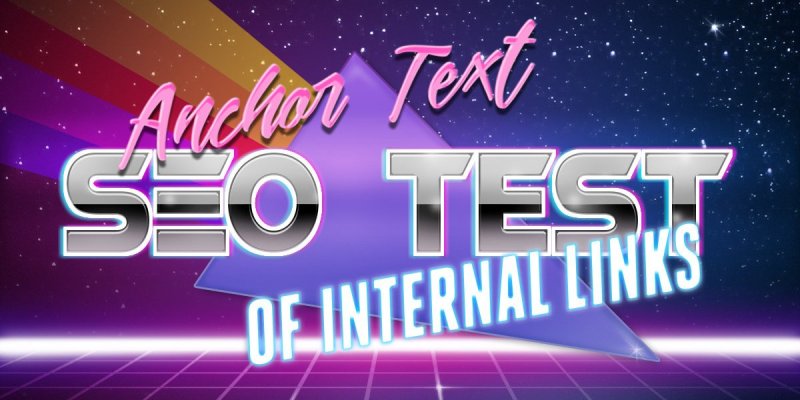
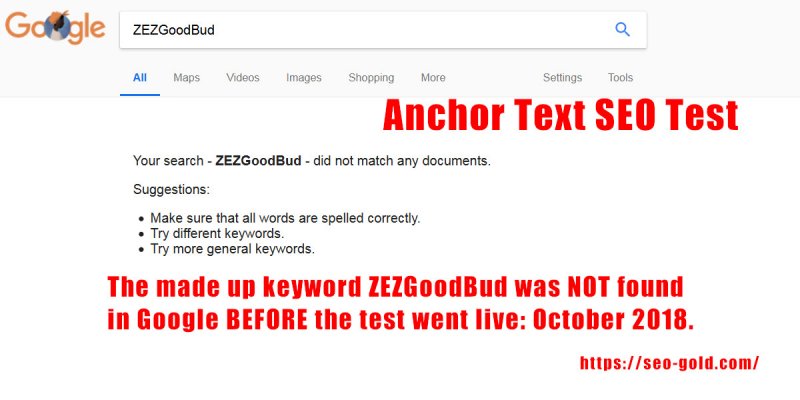
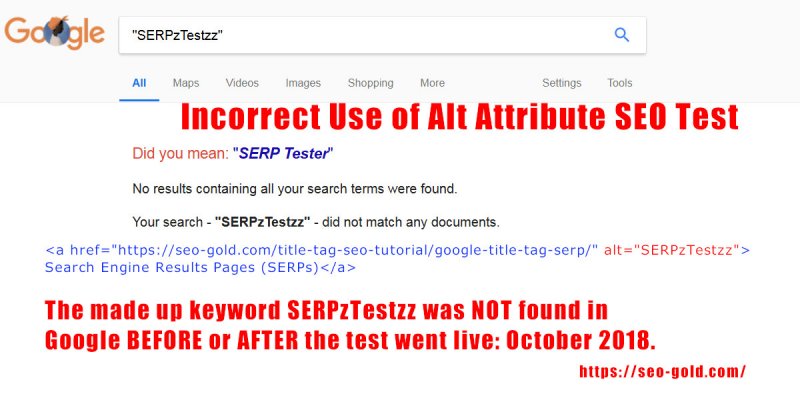
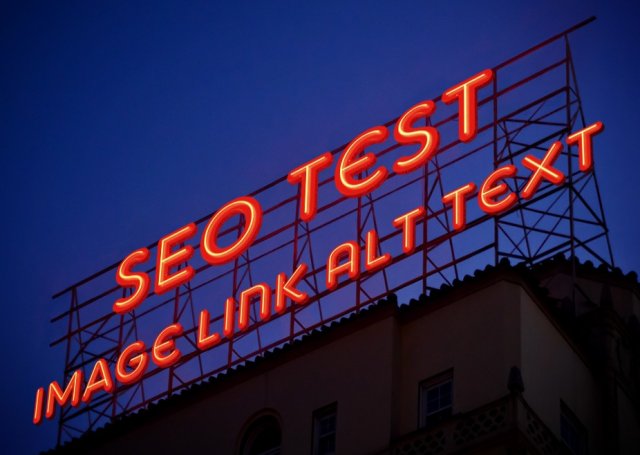
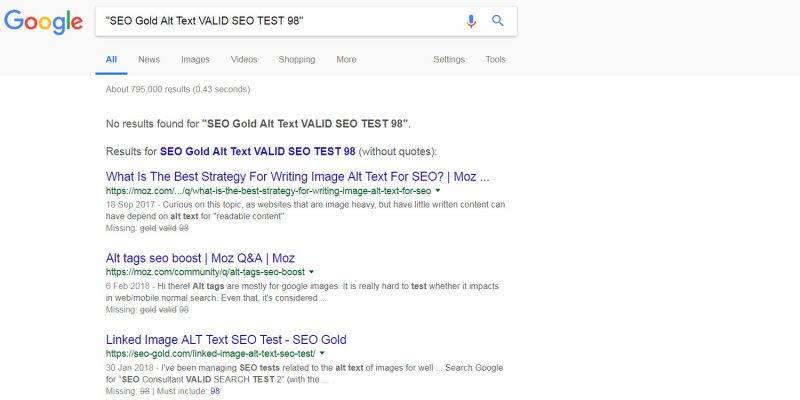
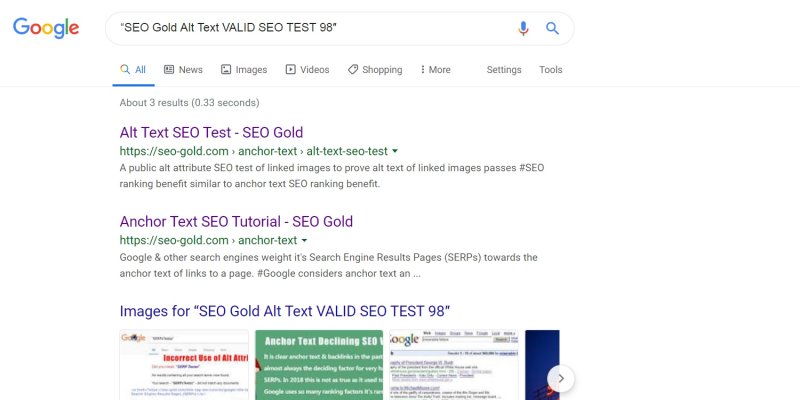
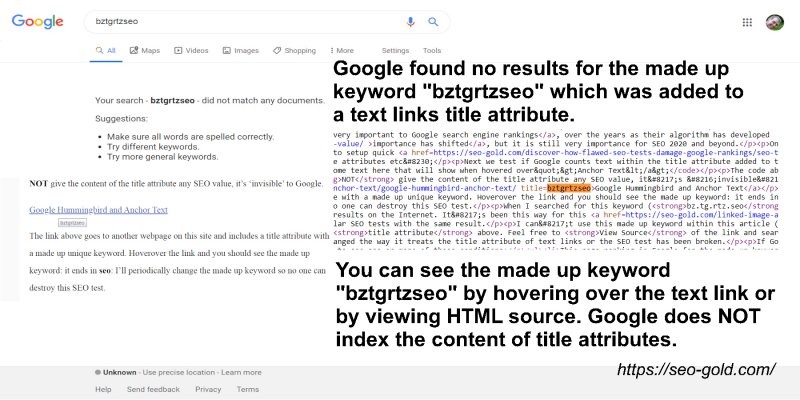

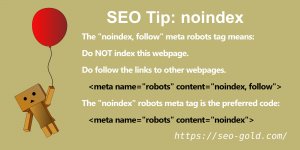

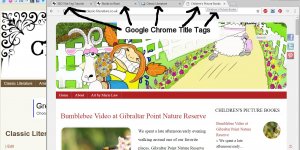
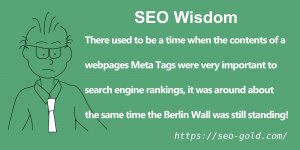
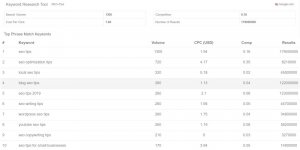
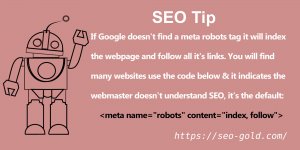
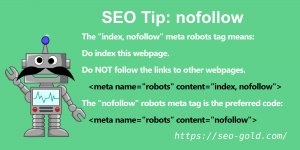
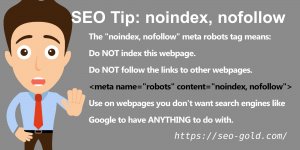

Hello SEO-Gold,
I have a question related to PR and anchor text.
Lets say I own website dedicated to Corvettes, and a friend linked from his site with an anchor text “Johnathan’s site” or “Johnathan Mayer’s cars”, without Corvettes word.
Friend’s website PR that he left my link is really high.
My question: does this will give any ranking value for my site? Let’s say that my onpage seo is optimized for Corvettes.
Is related anchor text from high PR sites is so critical important? I mean if a link don’t have a word Corvettes that mean I won’t get any seo value by ranking for Corvettes word (even if it’s optimized for)?
Johny.
PR and anchor text are not linked as such, you can have a website or page with no related links with rubbish anchor text do really well in the SERPs because of the sites/page overall PR: basically get a site enough links from any source (avoiding penalties) and it will rank well after the links mature (Google sandbox).
If you got a link from Google’s home page (PR10) you’d get a CRAP load of link benefit, this would flow through your site and boost all your on page SEO. there was an example of a blogger who got a great link from Google and he took loads of SERPs completely unrelated to the anchor text within the link!
Anchor Text SEO Test of Internal Links
Add to this that internal links with good anchor text are treated no different to incoming links with good anchor text, if most of your internal links to your Corvettes page used the keyword Corvettes as anchor text they would boost that page for that SERP. Most of my rankings are based on this type of SEO, internal links are so undervalued in the SEO industry.
That being said the ideal situation is all your incoming links and internal links have great anchor text, because it does add to the sites overall rankings. You’d get more from a link with good anchor text (you get the link benefit boost AND the anchor text benefit boost) than one with poor anchor text (just get the link benefit boost).
The link benefit boost is far more important than the anchor text boost from a link. I’d take one link from the home page of Google with anchor text “Click Here” over 1,000 links from PR5 home pages with great anchor text from related sites. Imagine what you could do with all that link benefit from a Google home page link (drool :-)).
David
Thank you very much David, very detailed answer and it’s exactly what I wanted to hear:)
Thanks for the answer.
John.
Really great site thank you.
What about using an alt=”” tag on anchor text?
From your example (I added an alt tag to your Anchor Text):
……links to our home page (https://seo-gold.com/) with the anchor text SEO Gold-
SEO Gold
The HTML code for which is-
Excuse me if this is stupid, still learning. Have to say though I am smarter after reading your articles.
Cheers
Rick
I fixed the HTML issues created by your comment, WordPress treats what you posted as link, you have to change the < to the code for that character.
Anyway, it should be ignored by Google etc… since alt attribute text is only meant to be associated with images.
I’ve added a quick test to this page, I’ve added unique text into a new alt attribute of a text link (so not associated with an image). The text link is close to the top of the page with anchor text “Search Engine Results Pages (SERPs)”.
As long as no one links to this page with the unique text I added to the alt attribute it will remain a valid test (I’ll setup a secret one somewhere as well). Obviously I can’t write the made up word here as it will invalidate the test (view source to see it).
Give it a little time for the page to be reindexed (check the cache for the date) and if that made up word doesn’t show up as a search result for this page it confirms Google ignores it.
Alt Text SEO Test of Linked Images
If it does count alt text within a text link I’d be very careful using it as Google will treat it as hidden text as it does not show up as a tool tip** on text links.
** The title attribute (title=”keywords”) added to text links is for tool tips and the content is ignored by Google. I expect Google has already taken this into account, but you never know for sure until you test it :-)
David
Just to clarify for your readers the purpose of the alt and title attributes:
alt is short for ‘alternate text’. It should be used to give a brief description of the image it is attached to. If you have a linked image and the image is just text that reads ‘my homepage’, the alt text should be ‘my homepage’. This attribute is an *accessibility* feature for people who use screen reader software or have images off for whatever reason.
This is where the title attribute comes in. If you have anchor (or image link alt) text which does not clearly indicate what you are linking to, or you wish to elaborate on your actual anchor text, you use a title attribute to expand.
e.g.
I saw a <a href=”…” title=”Watch Madonna’s new video on YouTube”>great new music video</a> on tv today.
It’s a shame that Google doesn’t index title text, because that is the ideal place for the kind of SEO optimisation you discuss.
In the meantime, it would be ok to gently elaborate inside alt text. You do say you shouldn’t stuff alt with keywords, but I think your article needs to stress that this is a functioning attribute that is valuable to lots of web users.
It is NOT ok to load it with SEO keywords in the navigation (or *anywhere else*) to the point where the original content of the image is obscured to people who can’t see the actual image. It’s not just Google that reads alt text, it’s people.
I add that alt attribute is not allowed in HTML A tag http://www.w3.org/TR/REC-html40/struct/links.html#h-12.2
You generate not valid HTML code
My two cent
Simone
How many characters does Google index in the alt text for images and links?
Do we add alt text delimiting phrases with commas?
Wonderful info.
Thank you!
Hi, I’ve read your article and I find it very interesting.
I found strange that Google use image.alt attribute as keyword for link.
I know that Alt attribute is useful to provide an alternative text for images when it’s not possible to show pictures or for accessibility purpose, not SEO one. For this reason I find strange the use of alt attribute on a image to bypass template space problem. What do you think about this?
Another question. My website contains video, and I’ve one page for every video. In every page there is an Abuse button that allow to user to gimme a feedback about strange content, this button link a second page with a form. I’ve seen by Google webmaster tool that Google give to the keyword “abuse” great relevance, but is not the content of my website.
How can I tell to Google this is a “service link” not a content one? (noref?)
Thank you
Simone
Anyway, it should be ignored by Google etc… since alt attribute text is only meant to be associated with images.
I’m curious about the preferred or optimized ‘length’ for anchor text. I recall there was some discussion that Google discounts anything beyond three words used in anchor text links, but this seems somewhat limiting for a search engine to produce accurate results after a time. Any thoughts?
Excellent work
really started looking into SEO for a couple of months now and your tutorial information is spot on – Thanks
Site age, link age it all goes into the Google philosophy of trust rank. The longer links and a site has been around the web without any trouble the more it is trusted. I think this is in response to site owners who set up a spam site and do things like hack others sites for links. If a site has been around with good behavior, naturally attracts links in an even progression, not out-of-bounds of their expected moving average of link growth, it will gain trust with time.
This is good news actually if you have an old site.
The real challenge is to start a new site and make it rock.
I had thought of creating a site about Chess, which is one of my online interests but alas I think I am too late to get in.
Does an anchor test on a page of a website linking back to a different page on the same website, help?
Yes
Google does not distinguish between internal and external links when it comes to passing anchor text (and alt text) SEO benefit.
Great article… definitely helpful for figuring out anchor text optimization. My only issue, which I’ve come across a lot with SEO articles, is the use of the sites’s own titles exclusively for examples. This has a meta effect where SEO noobs like me get confused. E.g.:
“Quick SEO Tip – note above how we have linked out important phrases like Professional SEO Consultant Services and SEO Tutorial to their respective pages including a link to this page – anchor text.” (I understand this, but I have to think very hard).
For Beginners guides and tutorials I think it’s beneficial to use totally non-SEO related examples.
Thanks again!
Tyler G.
As a new entry in SEO, I was searching SEO and it’s associated issue like anchor text, and after found SEO Gold I got it clearly and really it’s helpful. This site has brought different anchor text affiliated issue, really very helpful. I loved it.
Mamun
Found this while researching and it clearly makes the case for ALT and TITLE attributes. I’m sharing this page with our SEO students.
Great article – great test – very helpful.
Question: Does Google weigh the value of anchor text links differently than alt-attribute text links? Or in other words, is it better to link from inline text than from images with alt-text?
Thanks!
I’ve read in a few places that anchor text is weighted more than an image alt text. Does anyone have current testing that clearly shows this? Logically IMO it makes sense as you could have an image of grapes, but your image alt text says bananas. The search engines would have a tough time programmatically knowing. So I’d imagine they can’t fully trust image alt.. Thoughts?
Its correct that Anchor tag has more weight and important, but Alt tag is equally important. And yeah why would a person keep Alt tag as a banana on the picture of grapes. So to me there seems no point that…there would be any confusion to search engine for figuring out what the picture is.Here are the few links hopefully it will clear your confusion.
# https://webmasters.googleblog.com/2007/12/using-alt-attributes-smartly.html
# https://www.searchenginejournal.com/image-alt-text-vs-title-vs-file-names/259441/
Richard Pham
Hi Richard,
If google does trust the image alt, then why do they ask for public support in reporting offensive images?
# https://www.google.com/search?q=toys&hl=en&rlz=1R2GZAB_enUS447&prmd=imvnsr&source=lnms&tbm=isch&ei=witRT6KhEefYiQKz3pG1Bg&sa=X&oi=mode_link&ct=mode&cd=2&ved=0CEAQ_AUoAQ&biw=1600&bih=649&gws_rd=ssl
Scroll to the bottom: “Report Offensive Images”
I’ve tried to test the relative weight of alt text verses anchor text SEO wise, but I haven’t been successful in producing clear results.
I use the same logic you are using, more visible something is more likely Google will consider it an SEO ranking factor.
I would say given a choice Google would not consider the image alt text for SEO rankings because it is semi-hidden content which is clearly open to black hat SEO abuse. At one point it only considered the alt text of linked images, currently it considers all alt text associated with images.
The problem is if they don’t consider alt text as an SEO ranking factor Google looses a metric for ranking content: how would they rank images?
I work on the assumption anchor text has more SEO value than alt text.
Anchor Text Declining SEO Value
David
So if I write an article and someone asks for anchor text, they actually want a word eg Home insurance highlighted/linked, that is the anchor text? The link will then be the long piece of html that they give me?
Hello
When I read this article, it seems like you want that one shud not use Title/Alt tag. Is it?
Thanks
But your “Alt Attribute Text Test of Non-Linked Images” IS linked, so how is this a valid test of a non-linked image?
The reason for my keenness on this test is that your article is the only one that I have come across that suggests image alt text is (currently) relevant in web search (updated Feb 2012). Back in Dec 2007 Google documented the importance of the alt attribute with relevance to image-search, but makes no suggestion that this is a metric used directly in the standard web search.
# https://webmasters.googleblog.com/2007/12/using-alt-attributes-smartly.html
Other articles I have read state that the image alt text is not used directly in SEO because of its tendency (in the past) to be used for spamming/keyword stuffing and is therefore unreliable – although this has a detrimental effect on usability/accessibility.
(I state “directly in SEO” since good alt text improves usability/accessibility so could have an indirect affect on SEO.)
Aside: Please show a publish/updated date for the article and comments. In an ever changing world this is an important nugget of information to determine whether it is still relevant or not. I have read through all the comments. Almost to the end (4 comments above this one) Aaron gives a date of November 2009 – this is almost 3 1/2 years ago, which makes me wonder (after spending a not inconsiderable time reading the article and comments) the relevancy of other statements on this page?
Interesting article, thanks.
– Andrew
Well that’s embarrassing managed to mess up my own alt text SEO test :-)
I have other private SEO tests and can confirm the alt text image test results are still valid. Alt text counts on linked and non-linked images.
I’ve updated the alt text SEO test, have kept the one I made a mistake on as a LINKED alt text SEO test and added a new non-linked alt text SEO test. Give it a week or two (August 2012 at the latest) and the new test will be indexed.
Also updated the anchor text SEO article to include new Google Panda relevant SEO information.
You have a valid point on the dates of comments, I’ve kept the date off the main articles because I do keep them up to date.
David
Google has respidered this page and the results are in, alt text of non-linked images are ranked. Alt text of linked images are ranked, added screenshots of the results.
David
Thanks for the quick response and a great result all round! And the dates on the comments are a bonus (I only realised after posting a comment that I had in fact read the comments in reverse order)! Hhhmmm, comments in reverse order – better for SEO no doubt! ;)
I am still unsure if Google considered the ‘Title’ attribute.
And what is the different between the ‘Title’ and ‘alt’ attribute?
If I use the ‘Title’ attribute for a link, what do I put in it?
The title attribute (title=”Hoverover Tooltip of Links”) that you will find as part of a text link is IGNORED by Google.
Since the title attribute is ignored by Google SEO wise doesn’t matter what you add to it, Google ignores it.
Generally you’d use the title attribute as a place to add hoverover tips for usability reasons like a little more info what the link is to. This is also true for alt text of images except alt text is important SEO wise so also consider the SEO value.
SEO Anatomy of a Text Link
The alt text (alt=”This is Like Anchor Text for Images and Hoverover Text”) is used as a ranking factor.
For non-linked images it’s like a text version of the image.
If you have a picture of a Foot and add alt text Foot, Google will rank the image and the page the image is on for Foot SERPs.
If you have a picture of a Foot and add alt text Hand, Google will rank the image and the page the image is on for Hand SERPs.
For linked images the alt text is both the text to describe the image and the anchor text for the link. Like anchor text of links the alt text of linked images is used as a ranking factor for the page the link is on and the link is linked to. It’s important SEO wise.
David Law
I have been looking for an extensive article on anchor text and seo.
I am glad i have found this.
I think with all of the updates (and im sure many more to come) it is becoming difficult to place anchor texts correctly but i think the more natural we keep it hte better :)
hey…when i searched “how to anchor text a keyword” i couldnt find any site showing the real and short anchor texting method unless all of them simply tried to explain what is anchor texting….thanks a lot bro……
Hi Dave,
Thanks for these great SEO tutorial articles! They are very helpful!
Gabor
Excellent article, thank you. Quick question: Does the anchor text count as normal text to the page it is one AND also carry “link juice” to the destination page?
For example, if a home page has a hyperlink with anchor text “SEO Professional” then will that content impact both the home page and the page it links to?
Much appreciated!
The anchor text of a link has SEO value to the web page the link is on, so yes.
In my SEO experience the anchor text is considered more important SEO wise than standard body text, so if you can link to similar niche content with relevant anchor text it will help both the webpage being linked to and the webpage linked from.
You can read my WordPress SEO anchor text article for more details.
The above link will help the webpages it’s linking to for SERPs like “WordPress SEO anchor text” and it will help this webpage (one you are reading now) for SERPs like “WordPress SEO anchor text”.
Note how I didn’t limit the anchor text only to the targeted SERPs (not just “WordPress SEO anchor text”), I added some not so important text as well, this makes the link more natural which is very important to Google Hummingbird SEO. It’s why it’s so difficult to automate internal linking well, it’s easy to automate linking with a short keyphrase like:
Anchor Text or WordPress Anchor Text
But automatically internal linking from semantically relevant text without always using the same keyphrase is difficult.
Take the first sentence of this comment, I’ve manually added a link with anchor text anchor text of a link has SEO value which is a good internal link, it’s natural anchor text covering a relevant keyphrase with some natural text. Achieving this via a WordPress SEO plugin or service is difficult!
David Law